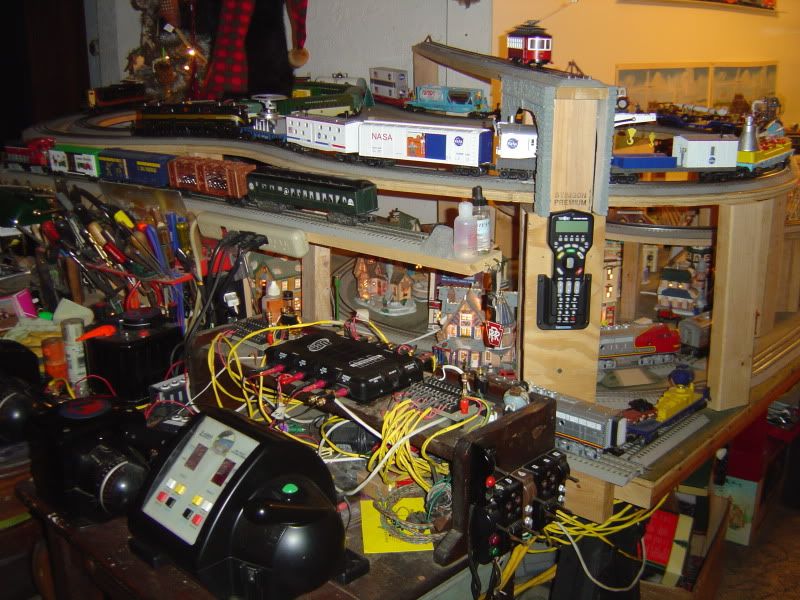I’m about to start laying track on the layout and definitely NOT good with the wiring scheme / electrical stuff. Basically, the layout will be Atlas O track with a combo of Atlas O and RCS turnouts. Step 1 will be laying “sea level” double main lines (approx 70 - 80’ each), with the inner loop connecting to the yard. Step 2 will be a double or tripleNew Yorkstyle EL line (approx 30 -40’ each), completely independent of all other track. Step 3 will be a single upper / mountain loop (approx. 70 feet) that will connect to the sea level outer main line. Overall layout dimensions are 14 x 33.’ All 4 loops will be connected to one Z-4000 and DCS (and likely Legacy soon). In accordance with MTH and Barry’s recommendations, I plan on Star Pattern wiring it and having track blocks.
Need help with the following:
1 - I want the ability to independently power down all loops and the yard so I don’t keep electrifying stuff not being used. As a practical matter, the two mains would both either be on/off at same time. Ideally, would like the ability to power down mains but keep yard electrified (for playing solitaire). You’ll note in my schematic that I have assumed toggles AFTER the DCS unit, but perhaps the toggles should be between the Z-4000 and the DCS?
2 – You’ll note that I have a DPDT toggle for the inner main to allow me to power down the inner main but keep power to yard. But, this still doesn’t allow me to ever turn both off when the Z-4000 is powered up (I came up with an alternate, where I had one toggle coming from DCS and then another toggle immediately after the terminal block that connects to all lines except the yard line – but this seems incredibly complicated).
3 - I may be overly complicating things with having a toggle to each of the mains, as they will both either be on or off. But I did this on the assumption that this is probably “cleaner,” because each main would be powered by a separate DCS channel and would be carrying the DCS signal to different terminal blocks going to different loops. But have no idea if this “separation” is necessary?
2 – Would I use SPST toggles for everything other than the inner loop/yard?
3 – Just confirming that I should wire all turnouts for each loop to a loop-specific separate power source? So, I’d have one power source for turnouts, lights and accessories for Main #1 (and maybe #2?), another for the EL and another for the upper line (or one to cover both of these?)?
4 - I want to put the toggles and the terminal blocks right on the control panel. Recommendations would be most appreciated.
Given this is my first time ever trying to plot something like this, my proposed set-up is probably overly complicated and can be done more easily and efficiently. Please take a look at my schematic and questions above as I would REALLY appreciate your help on all these things. And, given I'm a total novice, if anyone out there wants to tool around with this schematic and offer the "correct" one (what it SHOULD look like), I would be forever grateful!
Thanks VERY much.
Peter




![IMG_0941[1] IMG_0941[1]](https://ogrforum.ogaugerr.com/fileSendAction/fcType/0/fcOid/12129988037883192/filePointer/12129988037883205/fodoid/12129988037883201/imageType/MEDIUM/inlineImage/true/IMG_0941%255B1%255D.jpg)
![IMG_0941[1] IMG_0941[1]](https://ogrforum.ogaugerr.com/fileSendAction/fcType/0/fcOid/12129988037883192/filePointer/12129988037883205/fodoid/12129988037883201/imageType/SQUARE_THUMBNAIL/inlineImage/true/IMG_0941%5B1%5D.jpg)






